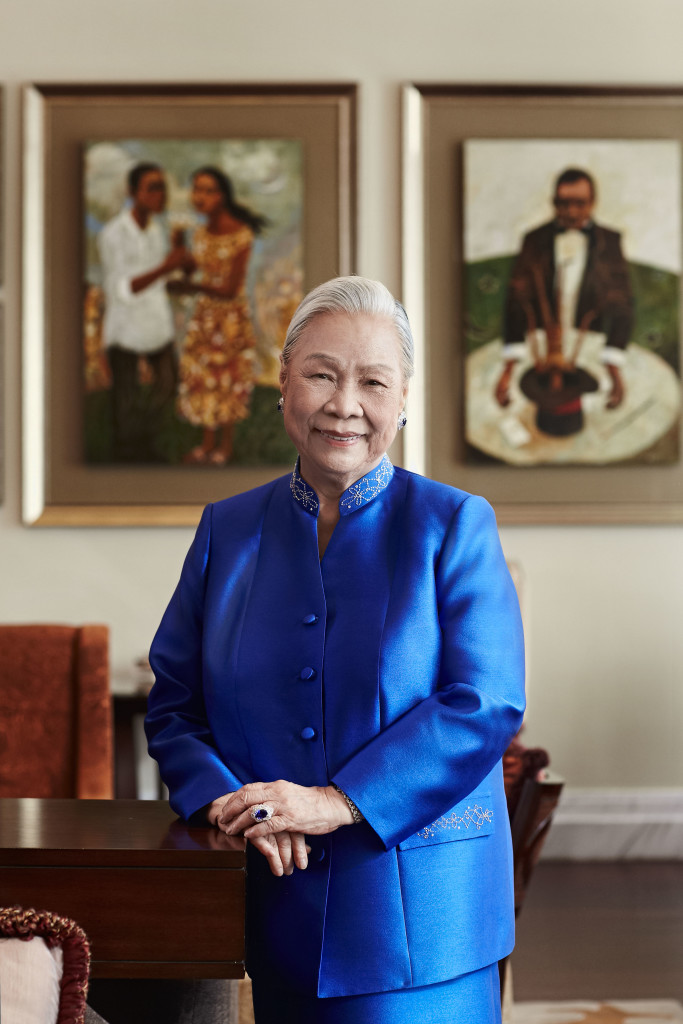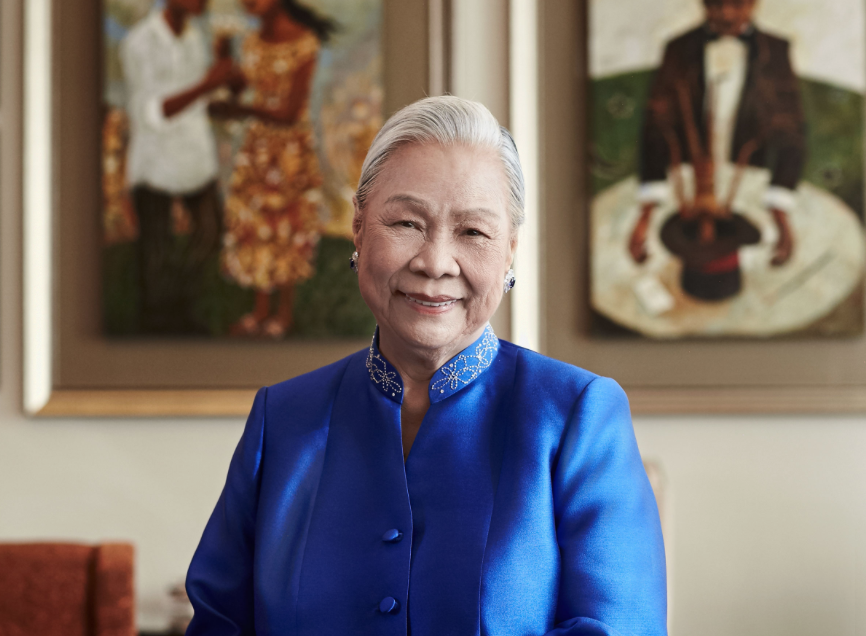By KRISTEL DACUMOS-LAGORZA
The world is filled with a million and one stories. But one whose story is worth being told and heard a thousand times over is that of, the dynamic, warm-hearted 90-year-old matriarch whose own life stories can inspire like the books on the shelves of her beloved National Book Store.
Deep inside, beneath the soft, silver-gray hair of Nanay Coring, as she prefers to be called, is the heart of a 19-year-old girl, still in love with life and filled with bigger dreams for her “little†bookstore.

Days of summer
“When I was young, growing up in Sta. Cruz, Laguna and Manila, we were very poor,†begins Nanay Coring, born on Sept. 23, 1923, “which is why I worked very hard.â€Â Even as a child, Coring was very enterprising and often thought of ways to help her earn an extra centavo or two.
On one such summer, Coring worked at an American sweets company, wrapping bubble gum for a minimum wage of 50 centavos a day (the exchange rate at that time was P2 to $1).
In another summer job, when she was 12 years old, Coring worked at a cigarette factory, unwrapping tobacco from old, moldy paper. For every package, she earned five centavos (a princely sum at that time). Coring would have difficulty finishing the warehouse, but not one to give up, she devised an ingenious plan. She invited her classmates and friends who, too, wanted to earn extra cash and employed them. She paid them two and a half centavos for every package. In half the time, she earned twice the money.
A love for the books
At 18, Nanay Coring fell in love and it was a love story for the books.
Quiet and 14 years her senior, Jose T. Ramos, the brother of Doña Juana, took one good look at her and was perfectly smitten and the two lovebirds eloped at the height of World War II.
Armed with the 1-2-3s and ABCs of business (which Nanay Coring learned from working at Goodwill Bookstore), the newlyweds started a new chapter together by putting up their very first bookstore on Escolta.
Measuring only a tiny 4×15 meters, the shop was named the National Book Store, after the brand of the cash register they were using at that time.
Business was soon booming, she had the love of her life by her side and her family and a small shop that would provide them with a comfortable lifestyle. But like the plots of the world’s most famous bestsellers – and even our beloved fairy tales – happily ever after only comes after much hardship

The three trials
The first trial came during the Japanese Occupation, when the Japanese banned and burned many of the books that were sold in Nanay Coring’s book store.
The second trial came when the Americans arrived in 1945. Bombs filled the air and smoke and fire darkened the skies. Unfortunately, their little store — that was selling dry goods at the time — went up in flames too, soap, slippers pencils and all. “We lost it again!†she gasps
As if testing their resolve, the universe challenged the couple once again when the roof of their beloved book store, which was then temporarily rebuilt, was blown off its hinges during a powerful typhoon in 1948. “I looked up and it was just sky,†she recalls. “My business was paper and everything was soaked. We weren’t able to save anything.â€
Nanay proved herself resilient. More than anything, it made her wiser. “People often forget, the road to success is paved with patience and hard work. Hard times are inevitable. There will be failures. But if you fall down, get back up. Never give up,†she reminds.
National Book Store has since become an institution. It solidified its success and cemented its place in the community when it became one of the first to pioneer greeting cards and postcards in the ’50s. (Nanay Coring was later able to secure the rights to franchise Hallmark cards, making greeting cards a staple in all of their National Book Store branches).
In the ’70s, Nanay Coring became an even bigger influence when she helped the generation of struggling families and students by reprinting foreign–printed college textbooks for the first time.
By making books more affordable, she made education more accessible and promoted the love for reading. In the process, she encouraged a nation to grow itself with ideas.
From its first “mom and pop†shop in the 1940s, National Book Store has since raised a generation of children; and their children’s children are now filling up the aisles of National Book Store.

Honor from the most high
With the success of National Book Store, Nanay Coring shouldn’t be surprised that she has become a celebrity of sorts. Strangers who consider her family have come up to her, sharing their gratitude and well wishes: “I couldn’t have finished college without you or National Book Store.†“I wrote my first love letter to my wife on a Hallmark card I bought from National Book Store.†“My best childhood memories were shopping for new books and pencils.â€
And with all the stories shared and praises received, Nanay can only reply humbly, “Nakakataba ng puso. Sino ba ako kundi isang tindera lamang? (It really fills my heart. Who am I but an ordinary salesgirl?)â€
“When I pray at night, I thank God,†shares the St. Joseph devotee and owner of over 268 statues of saints. “If He were to call me now, I’d be willing to go. But I hope (He doesn’t come for me) just yet. I have so many things to do. Like, I want to see my great grandchildren (all 11 of them) grow up and see how they will fare. I want to open up more branches in every corner of the Philippines. Children still need that.â€
Nanay Coring is an institution. Without her, books could not have been shared, words could not have been written and many of us would not have developed such a penchant for the smell of old books and new pencils. Nanay Coring not only helped raise a nation of dreamers and thinkers, workers and leaders, she also gave us the best memories of our childhood.
Thank you to Nanay Coring, whose own story has inspired us to make bestsellers of our own lives.
(Photography by MAU MAURICIO | Styling by PAUL CABRAL | Makeup by BERN DUEÑAS | Shot on location at THE WRITER’S BAR of RAFFLES MAKATI | Taken from PeopleAsia’s December 2013 – January 2014 issue)





